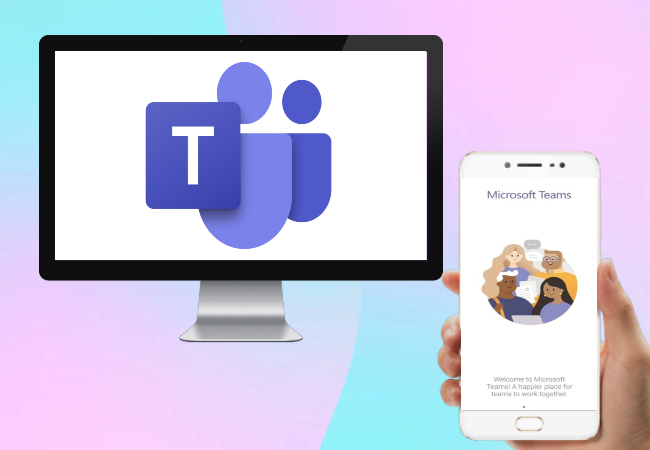Microsoft Teams has become an essential tool for businesses and organizations worldwide, enabling seamless collaboration and communication. But what happens when your time with a particular team comes to an end? Whether you’re moving on to other projects or organizations are undergoing restructuring, it’s important to know how to leave a Microsoft Teams team. In this comprehensive guide, we’ll walk you through the process of leaving a team on Microsoft Teams using both desktop and smartphone devices.
Microsoft Teams is a powerful collaboration platform that brings together chat, video meetings, file storage, and app integrations in one place. It allows teams to communicate and work together efficiently, whether they are in the same office or spread across different locations. Microsoft Teams offers a wide range of features, including channels for organizing conversations, file sharing, and integration with other Microsoft Office 365 applications.
Why Leave a Microsoft Teams Team?
There are several reasons why you may need to leave a Microsoft Teams team. It could be that your involvement in a particular project or team has come to an end, and you no longer require access to the team’s resources and discussions. Alternatively, your organization might be reorganizing, and teams are being reshaped to better align with business objectives. Whatever the reason, knowing how to leave a Microsoft Teams team is essential to maintain clarity and organization within the platform.
How to Leave a Microsoft Team on Desktop
Leaving a Microsoft Teams team on a desktop device is a straightforward process. Follow these steps to ensure a smooth exit from the team.
Step 1: Log into Microsoft Teams
To begin, log into Microsoft Teams using your credentials. Once logged in, you will be directed to the Teams interface, where you can access all your teams and channels.
Step 2: Navigate to the Team
In the left-side menu, locate and click on the Teams icon. This will display a list of all the teams you are a member of. Find the team you wish to leave and click on it to select it.
Step 3: Open the Teams Menu
On the right side of the team name, you will see a three-dot ellipsis icon. Click on this icon to open the Teams menu, which contains various options related to the team.
Step 4: Leave the Team
Within the Teams menu, you will find the option to “Leave the Team.” Click on this option to initiate the process of leaving the team. A confirmation prompt will appear to ensure you want to proceed. Confirm your decision, and the team will be removed from your Teams menu.
How to Leave a Microsoft Team on Mobile
Leaving a Microsoft Teams team on a mobile device follows a similar process to the desktop version. Here’s how to leave a team on both iOS and Android devices.
Leaving a Microsoft Team on iOS
If you’re using an iOS device, such as an iPhone or iPad, the process of leaving a team is straightforward. Locate the Teams list at the bottom of the screen, and find the team you want to leave. Tap on the team name to access the team’s details, and look for the More options dots (usually represented by three dots) beside the team name. Tap on the dots to reveal a menu of options, including the choice to “Leave the team.” Select this option to confirm your decision and exit the team.
Leaving a Microsoft Team on Android
On Android devices, leaving a Microsoft Teams team is also a simple process. Open the Microsoft Teams app on your Android device and log in using your credentials. In the Teams tab (usually located in the middle-bottom of the screen), you will see a list of all the teams you are associated with. Find the team you want to leave, and tap on the ellipsis button (usually represented by three dots) next to the team name. This will open a menu with various options, including “Leave Team.” Tap on “Leave Team,” and confirm your decision when prompted.
Important Considerations When Leaving a Microsoft Team
When leaving a Microsoft Teams team, there are a few important considerations to keep in mind. These factors can impact your experience and interactions within the platform.
Notifications and Chat Options
When you leave a team, you will no longer receive notifications associated with that team. This includes updates, announcements, and tags in channels. However, your chat options in Teams should still function, allowing you to contact team members individually. It’s important to note that team-wide video meetings may no longer be accessible to you.
Retention of Messages and Content
Leaving a team does not erase any messages or content you have sent within that team. All your previous messages will still be visible to team members. This retention ensures that important information and discussions are preserved within the team’s history.
Leaving an Organization
While leaving a team removes your association with that specific team, it does not eliminate your participation in the organization that created the team. If you wish to leave the organization entirely, you may need to explore additional steps. In some Teams setups, you can visit the “My Groups” section in the “Apps” tab to select your profile and choose to leave the organization. If this option is not available to you, contact your organization’s admin for guidance.
Special Cases
There may be instances where leaving a team is not possible or straightforward. For example, certain teams, such as those within educational versions of Microsoft Teams, may not allow individual members to leave on their own. Additionally, if you are the last person in a team and have been assigned team owner responsibilities, leaving the team may require additional steps, such as deleting the team entirely. If you encounter any difficulties or unique situations, it is recommended to consult with your organization’s admin for guidance and support.
Frequently Asked Questions
Can I leave a Microsoft Teams team if I am the team owner?
Yes, team owners have the ability to leave a team. However, it’s important to designate another team owner before leaving to ensure the team’s continuity and management.
Will I still have access to the team’s files and documents after leaving?
No, leaving a team revokes your access to the team’s files and documents. Make sure to save any necessary files or information before leaving the team.
Can I rejoin a team after leaving?
Yes, in most cases, you can rejoin a team after leaving. However, this depends on the team’s settings and permissions set by the team owners.
What happens to the team’s channels when I leave?
When you leave a team, you will no longer have access to the team’s channels and their respective conversations. However, the conversations and content within the channels will still be visible to other team members.
Can I leave an organization in Microsoft Teams?
Yes, it is possible to leave an organization in Microsoft Teams. However, the process may vary depending on the organization’s settings and policies. Contact your organization’s admin for guidance on leaving an organization.
Conclusion
Knowing how to leave a Microsoft Teams team is essential for maintaining clarity and organization within the platform. By following the step-by-step instructions provided in this guide, you can confidently leave a team on both desktop and mobile devices. Remember to consider important factors such as notifications, message retention, and organization-wide implications when leaving a team. If you encounter any difficulties or unique situations, don’t hesitate to reach out to your organization’s admin for guidance and support. Stay organized and make the most out of your Microsoft Teams experience.
Experiencing difficulties with your Device, check out our “How To” page on how to resolve some of these issues.








